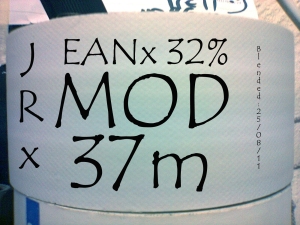Maximum Operating Depths (Part 1)
Cylinder labels – What to do?
Scuba diving is still claiming victims. Sometimes, reading newspapers, it is possible to hear about the diver’s oxygen cylinder that ran out. If you read this blog, you are probably a diver and therefore know exactly what I am talking about!With today’s demand for advanced diver training these journalist could never be so far from the truth. Oxygen cylinders are dangerous, a bit like a loaded weapon. If mishandled, it is not a question of ‘if’ but ‘when’ will it kill!? Unless…
As soon as divers enter in the Technical diving realm, they will carry along a variety of gasses either to extend their bottom time or to help during the decompression or ascent phase of the dive.
Scuba diving cylinders are to be filled with air most of the time, or and that is becoming more and more popular, anything else than air. Not only it is important to get your ‘air’ fills in reputable filling stations but if the facility is filling also other breathing gasses, such as Nitrox or Trimix, it is important if not vital to analyse the scuba cylinder you are given. Do not assume, guess or gamble!
In Tech dive centers it is a moral obligation as well as a safety guideline to label correctly any cylinders that does contain gas with other content than 21% oxygen and 79% nitrogen.* Pure oxygen must be marked as OXYGEN!!!
In order to warn the novice diver that some cylinders are not for his or her use but are either oxygen rich or lean mixtures. Be aware!!
So let’s have a look at how and what sort of labels/stickers we’ll use to label our cylinders and what will be written on these ‘reminders’.
For divers using EANx mix in their bottom phase cylinders, it is recommended to write the Maximum Operating Depth (MOD) and a personnal identification to differentiate your cylinders from other team members using the same gas.
It would go as follow:
- for a Nitrox 32 @1.5P02=37m
- Diver’s nickname JRx
1.5 PO2 is used for this exemple as an MOD – I would have 1.4 as a TOD
By just giving the maximum depth this cylinder is safe to breath, I limit the confusion and potential danger of breathing the wrong gas at the wrong depth.If taken to an extrem it can lead to confusion, look at this exemple:
On the exemple above we must also admit a bit of Photoshop creation and not the use of a permanent marker!
So again, less is more!
We must fear the mishandling of labels and other marking system. More recently a tragic accident occurred during an exploration dive in the famous Wakulla Spring in Florida. A very experience diver and instructor died due to label error and gas switch at the wrong depth. Because this why divers die, switching at the wrong depth with the wrong gas.
If you are diving using trimix blends, you MUST make sure your cylinders are properly and clearly marked. Some trimix blends hold a content of oxygen breathable from the surface to depth with an MOD defined by the PPO2 the diver accepts to expose him or herself. On the other hand, to dive below the 60m range, it will be required to use what is called a hypoxic trimix blend. This denomination simply means that the gas in the cylinder is only breathable at depth and DANGEROUS if breathed at the surface due to a too little oxygen content. Some very deep trimix blends don’t have enough O2 to support life, while at the surface.
In the Part 2 of this article, we will be discussing, where we should place these markings on the cylinders. Stay Tuned!
By Jason Renuox




No comments:
Post a Comment